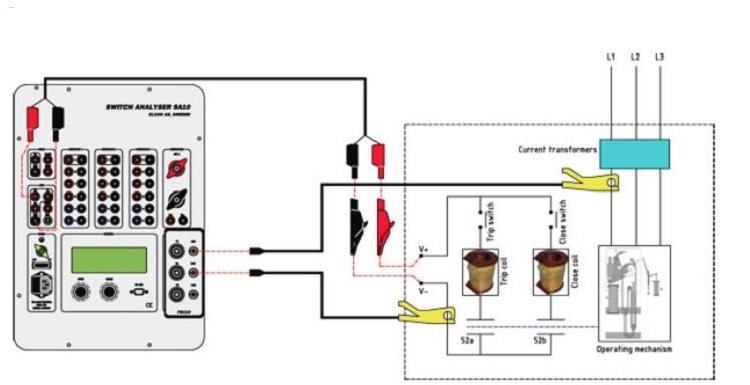
“First trip” test is important to determine a condition of the coil operating mechanism and give us information how would the circuit breaker perform in a real-life fault situation.
Therefore capturing the first trip operation is essential to effective circuit breaker condition
monitoring.
A circuit breaker spends most of its lifetime conducting a current without any operation.
Once the protective relay detects a problem, the circuit breaker, that was idle for maybe a year or
longer, has to operate as fast as possible.
However, if the circuit breaker has not been operated for a long time, the latch friction may
increase. Information about the latch friction can be obtained from the coil current waveform
recorded during the first trip operation.
The biggest benefit of using first trip testing is to test “real world” operating conditions. If the circuit breaker has not operated for year, first trip testing will show if the circuit breaker is slower due to problems like corrosion in the mechanism linkages. With traditional methods, the testing is carried out after the circuit breaker has been taken out of service and has been operated once or even twice.
When a fault occurs, it is expected to CB operate correctly.
Unfortunately, environmental contaminants, hardened grease, vibration and other factors can adversely affect the operating time of the circuit breaker.
Frequently, this problem is cleared after the first operation of the breaker, and thus the original cause can’t be detected in subsequent testing.
Modern CB analyzers offer an online testing mode that can record the first on-line trip time without insulation from grid.
Online first trip testing provides 3 key benefits:
- Saves time and resources
- Determines whether a CB needs offline diagnostic testing
- Captures CB slow operation on first trip test
The first on line testing measurements have this sections:
- Trip and Close Coil Current
- Main Contact Timing
- Battery Voltage graph
- Auxiliary Contact Inputs
In fig shown typical Connection Diagram for an Online Test from Vanguard Instruments Company with 3 non-contact AC current probes, connected to the CB bushing CT secondary winding, are used CB to detect the main contact current. Since the timer can detect when the Trip or Close operation is initiated, the contact time can be determined based on the presence or absence of the bushing current.



